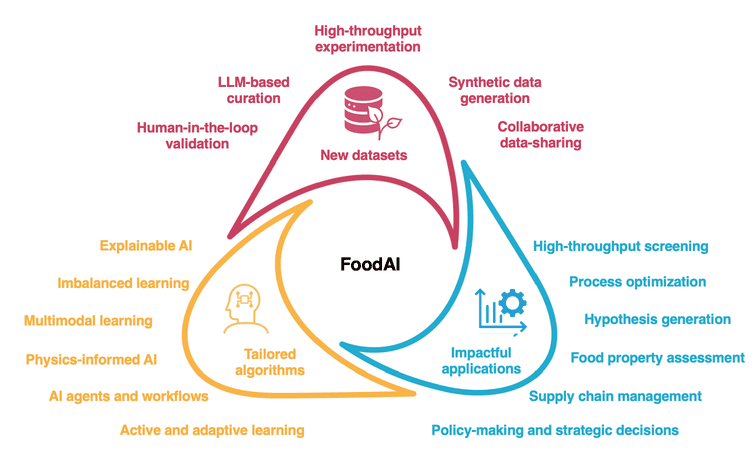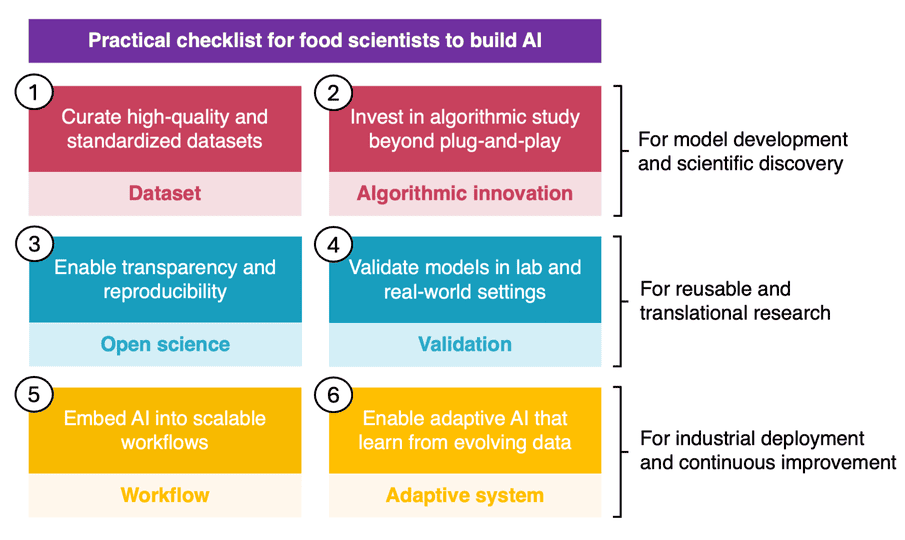FoodAI Group invited to write AI guide for food scientists
Titled “Practical Guide for Food Scientists to Build AI: Data, Algorithms, and Applications,” the paper responds to a growing need in the food science community: while AI is rapidly advancing in many areas, such as drug discovery and materials science, food scientists need a clear, actionable guide for better applying AI to complex food systems.

A practical roadmap for AI in food science
Rather than offering abstract concepts, the article distills modern AI into three foundational pillars, each directly connected to hands-on activities in food research:
-
High-quality datasets — how to create, curate, and standardize data using tools such as large language models (LLMs), high-throughput experimentation, and collaborative data-sharing frameworks.
-
Tailored algorithms — guidance on choosing and developing food-specific machine learning approaches, from multimodal models and explainable AI to physics-informed neural networks and domain-specialized LLMs.
-
Impactful applications — practical examples of how AI can drive scientific discovery, improve food safety, accelerate formulation design, and support industrial decision-making.

A checklist designed for everyday research practice
To support day-to-day implementation, we propose a six-point practical checklist that food scientists can use when planning AI projects. The checklist covers critical steps: data creation, algorithm development, transparency and reproducibility, validation through lab and real-world experiments, building scalable workflows, and enabling adaptive learning.
This checklist is designed specifically for food scientists who may not have extensive machine learning training but wish to incorporate AI into their research in a reliable, rigorous, and reproducible manner.
